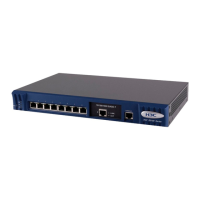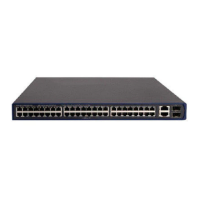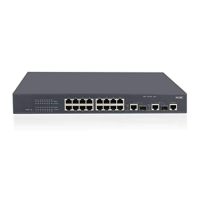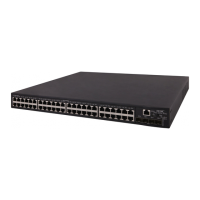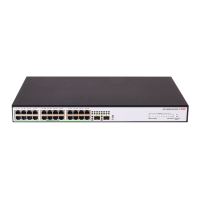1-2
interface-number: Port/interface number.
by-linenum: Displays configuration information with line numbers.
|: Uses a regular expression to filter the configuration of the switch to be displayed. By specifying a
regular expression, you can locate and query the needed information quickly.
regular-expression: A regular expression, case sensitive. It supports the following match rules:
z begin: Displays the line that matches the regular expression and all the subsequent lines.
z exclude: Displays the lines that do not match the regular expression.
z include: Displays only the lines that match the regular expression.
A regular expression also supports some special characters. For match rules of the special characters,
refer to
Table 1-1 for details.
Table 1-1 Special characters in regular expression
Character Meaning Remarks
^
Starting sign, the string to the right of this
character appears only at the beginning of a
line.
For example, regular expression
^user
matches lines beginning with
user
, not
Auser
.
$
Ending sign, the string to the left of this
character appears only at the end of a line.
For example, regular expression
user$
matches lines ending with
user
, not
userA
.
.
Full stop, a wildcard used in place of any
character, including blank
None
*
Asterisk, the character to the left of the
asterisk should match zero or more
consecutive times.
For example,
zo*
can match
z
and
zoo
, and
so on, but not
zo
.
+
Plus sign, the character to the left of the plus
sign should match one or more consecutive
times.
For example,
zo+
can match
zo
and
zoo
,
and so on, but not
z
.
-
Hyphen. It connects two values (the smaller
one before it and the bigger one after it) to
indicate a range together with [ ].
For example,
1-9
means numbers from 1 to 9
(inclusive);
a-h
means from
a
to
h
(inclusive).
[ ]
Square brackets. Specifies a range of
characters, and matches any character in the
specified range.
For example,
[1-36A]
can match a string
containing any character among 1, 2, 3, 6,
and A.
( )
Parenthesis. Specifies a character group. It is
usually used with + or *.
For example,
(123A)
means a character
group
123A
;
408(12)+
can match 40812 or
408121212. But it cannot match 408. That is,
12
can appear continuously and it must at
least appear once.
Description
Use the display current-configuration command to display the current configuration of a switch.
After you finish a set of configurations, you can execute the display current-configuration command
to display the parameters that take effect currently.
Note that:
z Parameters that are the same as the default are not displayed.
z The configured parameter whose corresponding function does not take effect is not displayed.
Related commands: save, reset saved-configuration, display saved-configuration.
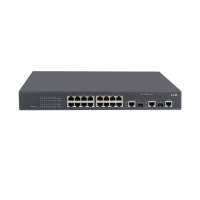
